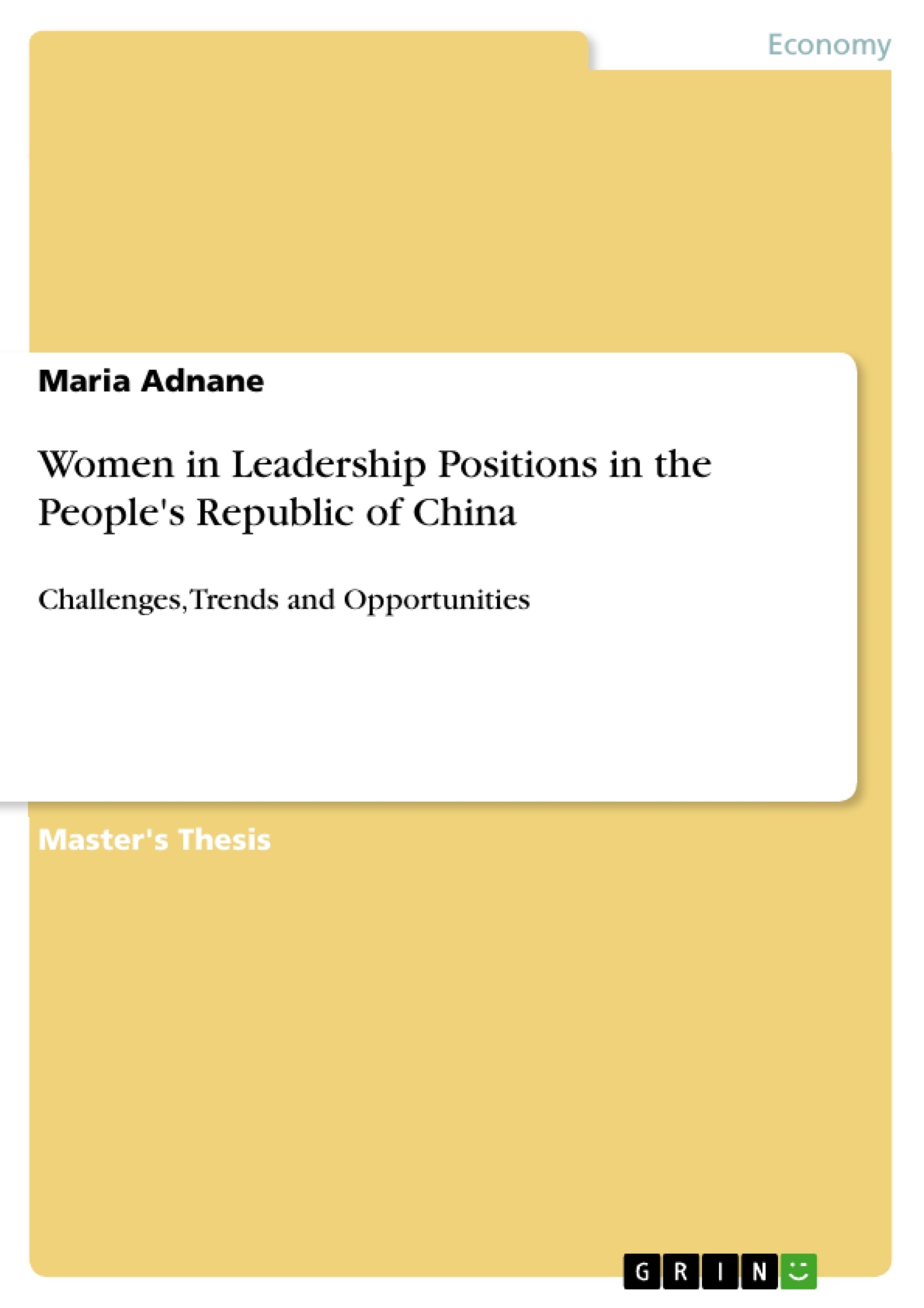Women are still significantly underrepresented in Top Management positions and leadership is still associated with the male gender as leadership theories traditionally focus on men. This is especially evident in China which has one of the world’s highest female labor participation but a female share of only eight percent on the corporate boards. Although Chinese women’s tertiary educational attainment is now equal to the tertiary education of Chinese men they still face many barriers on their way to the top. The strong influence of Confucian values perceiving women as inferior to men remains noticeable until today and women find themselves exposed to a strongly patriarchal business environment.
As being traditionally the main care-givers of their families they are deemed to be expensive potential mothers and thus gender- preference can be observed. second Classical leadership theories of the Western culture as well as of the Chinese culture are introduced to provide a common understanding of their approaches.
Further the situation of women in the past and of today is being compared as well as their leadership styles, access to managerial leadership positions and the barriers they face. Since educational attainment of both genders does not explain why women are rarely found on the upper managerial ranks, other reasons that could be a barrier for women’s career advancement are examined in this research.
Inhaltsverzeichnis (Table of Contents)
- 1. Introduction
- 2. Understanding of Leadership
- 2.1 Definitions of Leadership
- 2.2 Western Leadership Theories
- 2.3 New Leadership theories
- 2.4 Chinese Leadership Theories
- 2.5 Cultural Differences between Western and Chinese Leadership Paradigms
- 2.6 Conceptual Delineation of Management and Leadership
- 3. Women in Managerial Leadership
- 3.1 Changes in Western and Chinese society
- 3.2 Feminist Leadership Theories
- 3.3 Women's Visible and Invisible Impediments to the Top
- 3.4 Educational Advancement of Chinese and German Women
- 3.5 The Impact of Gender Diversity
- 3.5.1 Women's Labor Participation
- 3.5.2 Gender payment gaps
- 3.6 Personality Traits, Intelligence and Skills as Leadership Predictors
- 3.6.1 The Big Five Personality Traits
- 3.6.2 Cultural Influence on Personality Traits
- 3.6.3 Intelligence in the Context of Leadership Emergence
- 3.7 Gender differences in Personality Traits and Intelligence
- 4. Research Model
- 4.1 Hypothesis and Research Questions
- 4.2 Research Methodology
- 4.3 Data Collection
- 5. Results
- 6. Discussion
- 6.1 Conclusions
Zielsetzung und Themenschwerpunkte (Objectives and Key Themes)
This Master Thesis aims to analyze the challenges, trends, and opportunities for women in leadership positions within the People's Republic of China. It explores various facets of leadership, including its definitions, Western and Chinese leadership theories, and the impact of cultural differences. The study also examines the barriers that women face in attaining top leadership roles and the influence of gender diversity on organizational performance.
- Leadership definitions and theories in Western and Chinese contexts
- Cultural differences in leadership paradigms and their impact on women
- Challenges and barriers faced by women in achieving leadership positions
- Impact of gender diversity on organizational performance and the role of education
- Personality traits, intelligence, and skills as predictors of leadership emergence
Zusammenfassung der Kapitel (Chapter Summaries)
- Chapter 1: Introduction This chapter provides an overview of the research topic, highlighting the significance of understanding women’s leadership in China. It outlines the research objectives, questions, and methodology.
- Chapter 2: Understanding of Leadership This chapter delves into the concept of leadership, exploring different definitions and theories from Western and Chinese perspectives. It examines cultural differences in leadership paradigms and the distinction between management and leadership.
- Chapter 3: Women in Managerial Leadership This chapter analyzes the challenges and opportunities for women in managerial leadership roles. It examines societal changes in Western and Chinese contexts, feminist leadership theories, and the barriers women face. The chapter also discusses the educational advancement of Chinese and German women, the impact of gender diversity, and the role of personality traits and intelligence in leadership emergence.
- Chapter 4: Research Model This chapter presents the research model, outlining the hypothesis, research questions, methodology, and data collection procedures.
- Chapter 5: Results This chapter presents the findings of the research, analyzing the data collected from participating companies and individuals. It examines the representation of women in leadership positions, the perceived barriers to their advancement, and the attitudes towards gender diversity.
- Chapter 6: Discussion This chapter discusses the significance of the research findings, highlighting the implications for understanding women’s leadership in China. It provides insights into the factors influencing women’s leadership journeys and suggests recommendations for promoting gender equality in organizational leadership.
Schlüsselwörter (Keywords)
This thesis focuses on women in leadership positions in China, examining key themes such as leadership definitions, Western and Chinese leadership theories, cultural differences in leadership, women's barriers to advancement, gender diversity, personality traits, and intelligence. The research utilizes quantitative and qualitative methods to explore the challenges, trends, and opportunities for women in leadership roles in the People's Republic of China.
- Citar trabajo
- Maria Adnane (Autor), 2012, Women in Leadership Positions in the People's Republic of China, Múnich, GRIN Verlag, https://www.grin.com/document/585300



